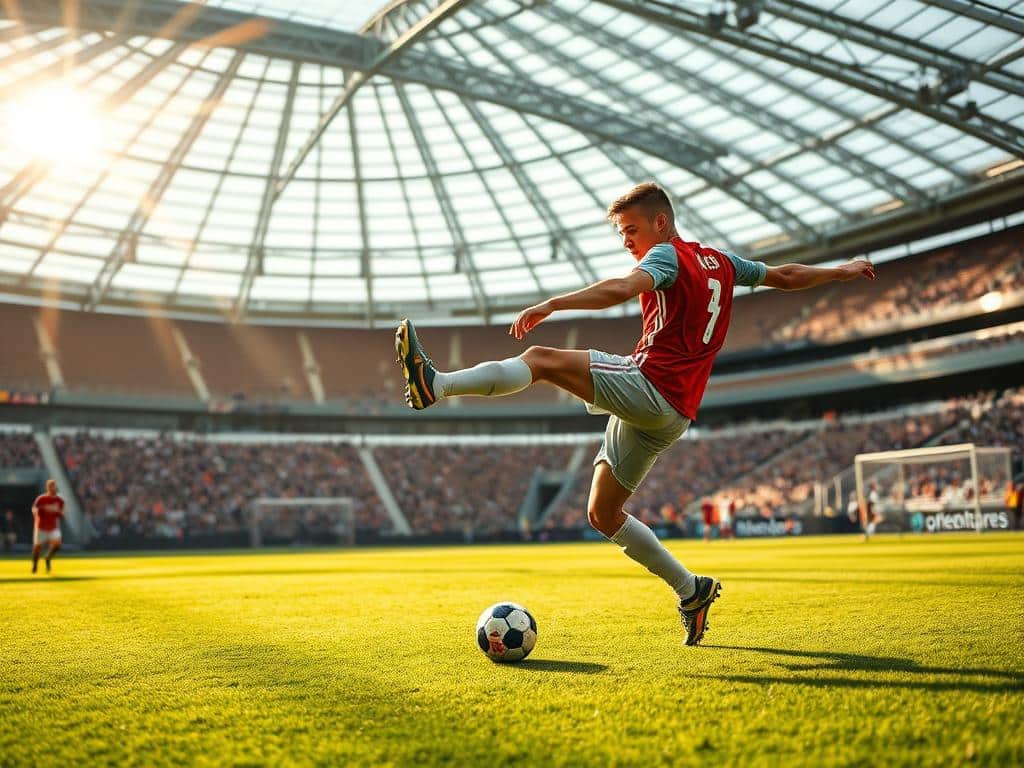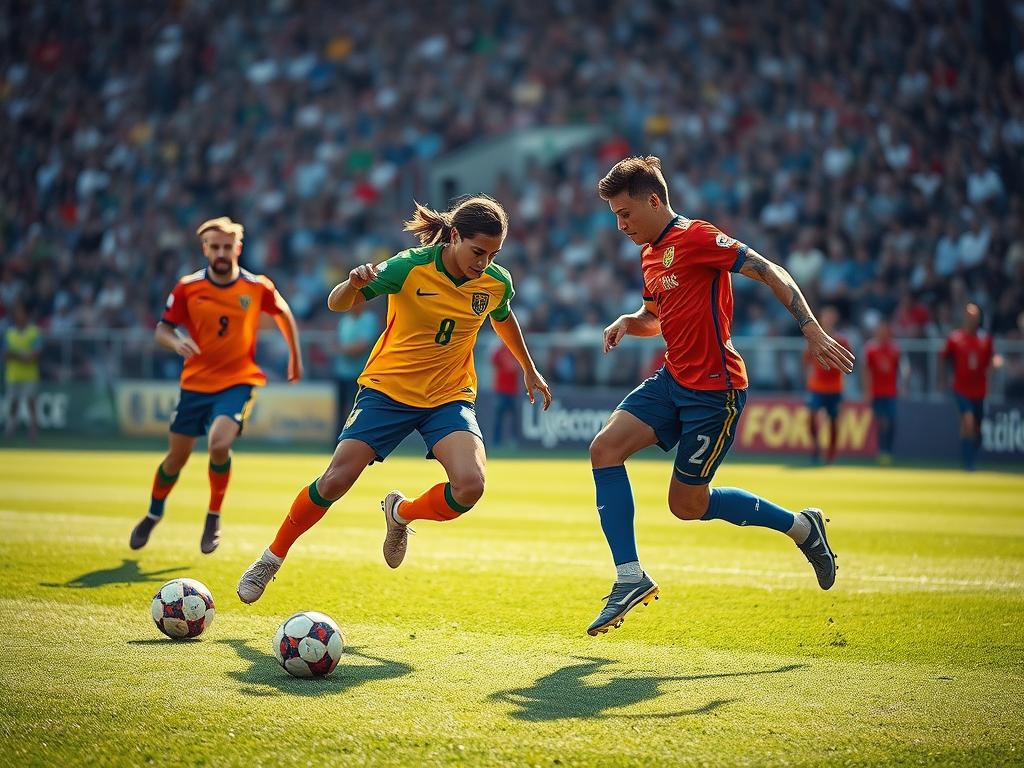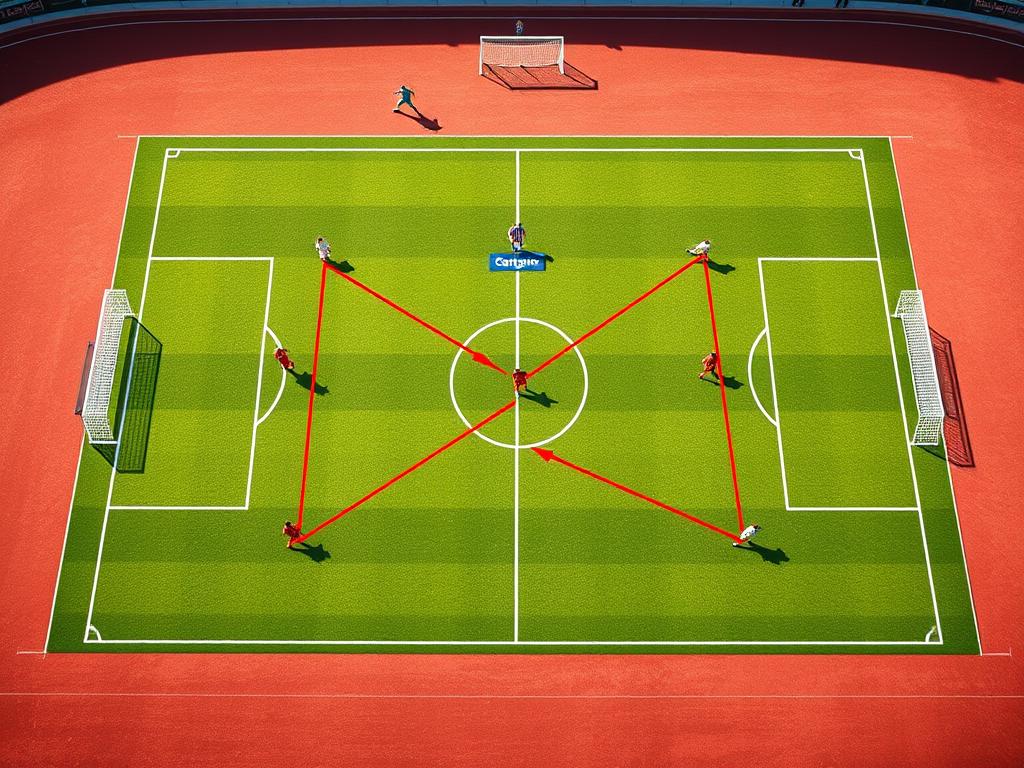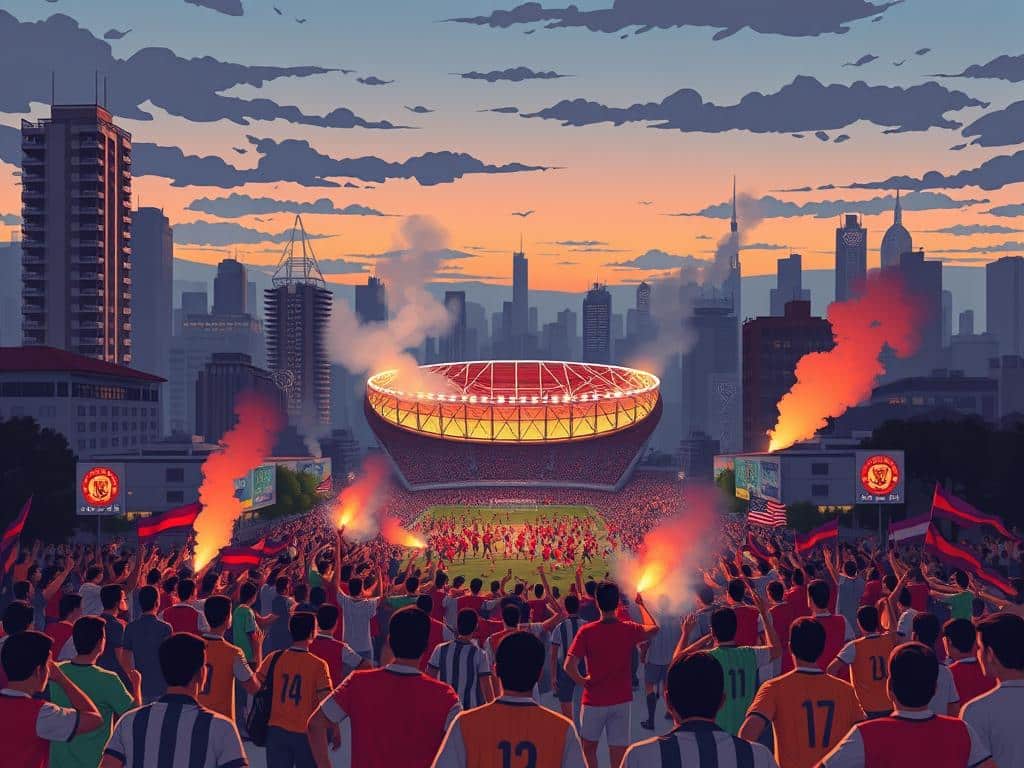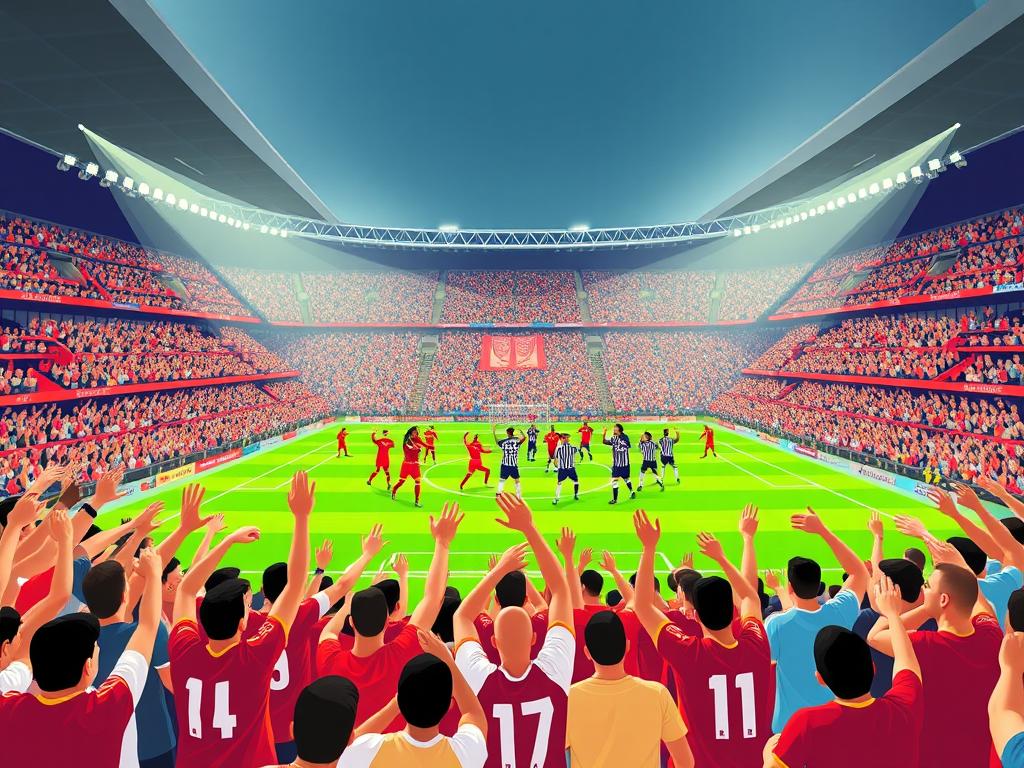You want clearer control of the pitch and that starts with switching play in soccer — the pass that stretches defenses and opens space on the far side.
When the ball sits on one side, defenders slide over and leave gaps. Accurate, well-weighted passes and a receiver who times a curved run change pressure into an attack.
Scan the field as the ball travels, choose a first touch that moves the team forward, and avoid risky long passes that gift the opposition a counter.
Coaching cues and simple drills can teach players to read angles, protect possession, and turn a wide switch into a clean 1v1 or overload.
Key Takeaways
- Width creates space; move the ball to the far side with purpose.
- Technique matters: trajectory, weight, and timed receiver runs win battles.
- Scanning and smart first touches protect possession after a switch.
- Use targeted drills and sessions to rehearse decisions under pressure.
- Know the risk: misplaced long passes can spark dangerous counters.
Foundations of switching play: width, space, and intent
Stretching the field starts with deliberate width and an eye for the far side.
Why width matters: You pull defenders across the pitch and open clear lanes on the opposite flank. That space turns a compact defense into a target-rich area for attackers.
When to act
Switch when possession draws the opposition to one side pitch. A crowded channel signals the far side has room. Quick decisions make the difference.
Technical pillars
Accuracy, angle, and weight of the pass decide success. The receiver must time a curved run and set a first touch that moves into space.
| Element | Key cue | Player role |
|---|---|---|
| Width | Wide winger high | Stretch and hold |
| Pass Type | Driven / clipped / lofted | Chooser adapts |
| Receiver | Scan during flight | First touch into areas |
- Intent matters: switch play to progress, not just recycle.
- Watch aerial cues: opposition may curve their press to lock one side.
How to execute a switch of play under pressure
Pressure teaches you fast: the right decision on a crowded side turns defense into an attack. Start with a quick scan before you receive the ball. Can you spot three defenders compressed on one channel and a full-back with acres on the far side?
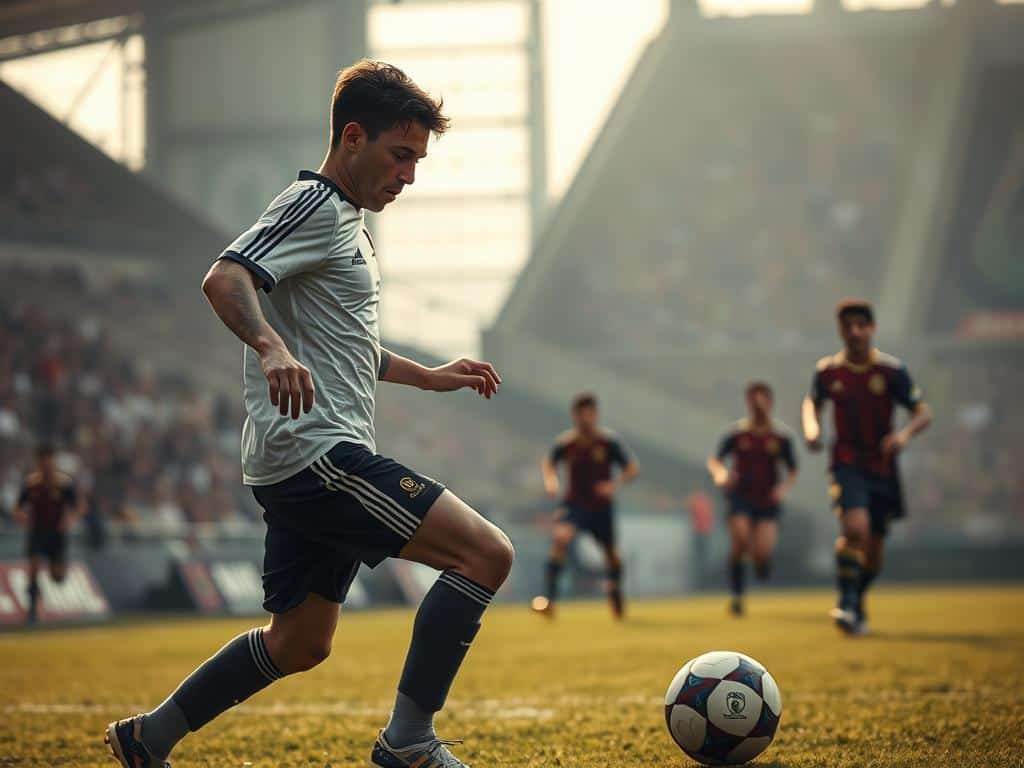
Scanning and cues
Scan early and often. Notice clusters, free wingers, and the opponent’s shifting shape while the ball travels. That visual cue tells you whether to keep possession short or attempt a long diagonal.
Pass weight, angle, and trajectory
Match the pass to the moment. A driven, low-trajectory pass stays on a rope and reaches the receiver quickly. An aerial clip buys distance and time but can trigger an opposition press.
Receiver movement and first touch
Teach curved runs so the player stays onside and can attack space. Time the late run, open the hips, and take a first touch forward. That touch sets up passing receiving on the move.
Tempo change
Change tempo: after two quick passes, hit the diagonal and move the ball quickly to the weak side. Use body shape to disguise the short option, then open your foot to launch the switch.
- Coaching cue: trigger the switch when three or more defenders commit and your far-side player is half-turned.
- Control the controllables: clean contact, eyes up, and a clear target zone under pressure.
- Want to drill reaction and scanning? See a useful piece on reaction time for players here.
| Situation | Best pass | Receiver action |
|---|---|---|
| High press | Driven diagonal | Curved run, first touch forward |
| Midfield squeeze | Low clip over line | Half-turn, pass on the move |
| Opposition retreat | Aerial switch | Win header or control, reset tempo |
Switching play in soccer: a step-by-step training plan and drills
Train smart: design progressions that force your team to move the ball across the field under real pressure. Alternate large and small formats so players learn when to circulate and when to hit a decisive switch.
Large pitch 9v8 — reward the diagonal
Set Blue 3-3-3 vs Orange 3-3-2 with goalkeepers. Mark a vertical line. A goal after a switch across that line is worth 2 points; a standard goal is 1.
Small pitch 5v5 — first-time finishes
Use mini goals and a midline. Only first-time finishes count. A first-time finish is 1 point; if the team switches across the midline before scoring, award 2.
Progressions and high-intensity repeats
Carry the first-time finish rule into the next large pitch session. Then add a 3-point bonus if a goal follows 8+ passes. Repeat small-sided rounds to sharpen close control and passing under pressure.
Counter-pressing layer
If the ball is lost but your team regains possession before opponents cross halfway, resume the sequence. This rewards recovery and keeps the session game-like.
| Part | Format | Key rule | Coaching focus |
|---|---|---|---|
| 1 | Large 9v8 | 2 pts for switch across vertical line | Timing, long passes, wide runners |
| 2 | Small 5v5 | First-time finishes; 2 pts if midline switch | First touch, tempo, finishing |
| 5 | Large progression | 3 pts if goal after 8+ passes | Possession strings and decision-making |
| 7 | Large + counter-press | Resume on immediate regain before halfway | Recovery, pressing, restart of sequences |
- Coaching detail: mark the vertical line and midline, track first-time attempts, and award points to reinforce desired habits.
- Rotate roles so all players practice scanning, passing, and finishing under realistic pressure.
Applying switches in real games: build-up patterns and player roles
Real matches demand patterns that turn possession into clear chances on the far side. Want to know how top teams do it? Look at how specialists link passes, movement, and timing.
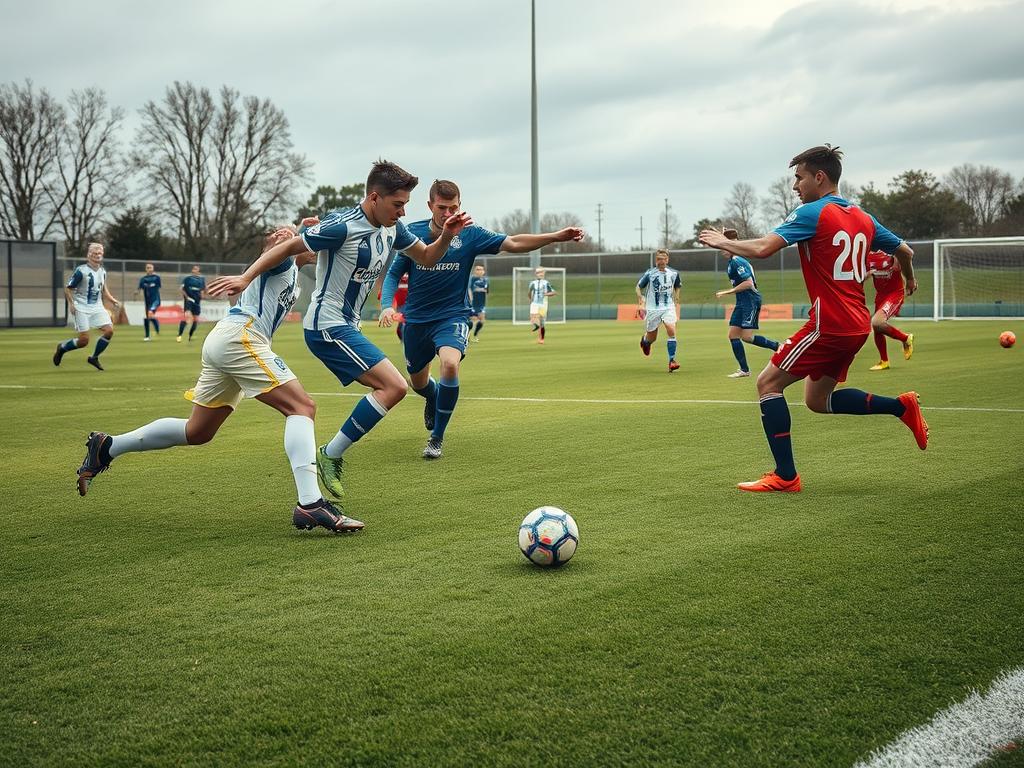
Transition and sustained possession: exploiting space behind the back line
In transition, be direct. A quick right-back switch play to a far winger can hit space behind the back before the defense resets. Think Alexander‑Arnold firing early diagonals to a runner or Robertson charging forward for a cross.
During sustained possession, circulate and draw pressure. Then find the free full-back. That early switch creates room to attack the box with a low or clipped delivery.
Targeting full-backs and wingers: from right-back switches to far-side attacks
Center backs read the pitch. Bonucci sends wing-backs in stride from a back three. In a back four he may find a dropping striker to keep the ball moving.
Use your best passers. Alderweireld’s low-trajectory diagonals turn half-chances into real opportunities and let teams exploit space on the opposite side.
| Phase | Who | Action | Outcome |
|---|---|---|---|
| Transition | Right-back / winger | Direct diagonal to far winger | Exploit space behind back line |
| Sustained possession | Midfielder to full-back | Circulate then switch to free full-back | Early cross, overload the box |
| Build from back | Center back | Find wing-back or dropping forward | Maintain passing flow, avoid counters |
| Final third | Winger / eight | Hold width or time run into box | Create 1v1s or late arrivals |
- Tip: spot weak full-backs, overload one flank, then flip the point of attack to isolate a 1v1.
- Be aware: against compact low blocks, switches move the opposition side to side, but a cutback may beat the block more often than a hopeful cross.
Defending switches and common mistakes to avoid
Defending a long diagonal is as much about timing as it is about technique. When the opposition hits an aerial pass you must act fast. A headed or lofted ball is hard to control. That triggers your press.
Pressing triggers: challenging aerial passes and curving the approach
See the high ball as a green light. Jump to contest it and curve your run to push the receiver toward the touchline. That limits their angle and keeps play wide.
Risk management: misplaced long passes, compact low blocks, and counter-attacks
Don’t overcommit. A poor or misplaced long pass can start a fast counter at your back. Against a low block, switches move the opposition but rarely break the block without runners or cutbacks.
Coaching cues: body shape, support angles, and sliding units across the pitch
Teach players to show the receiver outside and delay the first tackle until help arrives. When one defender presses, the team must slide across the pitch to protect the central area and the box.
- Key drills: rehearse pressing triggers, recovery runs, and winning the second ball.
- Common mistakes: telegraphed passes, flat trajectories, weak first touch, and no cover behind the press.
| Situation | Defensive action | Why it works |
|---|---|---|
| Aerial diagonal | Press and curve to touchline | Limits control, forces a sideways play |
| Misplaced long pass | Hold shape, track runners | Prevents counter into your back line |
| Compact low block | Delay press, block cutbacks | Forces low-percentage crosses and clearances |
Conclusion
Make every session count — teach patterns that convert possession into real chances.
Read the pitch, draw pressure to one side, then hit the far side fast. That quick switch creates better opportunities for your attacking team and raises the chance of a goal.
Double down on habits: use targeted drills and simple training progressions. Reward switches across marked lines, first-time finishes, and smart passing receiving so players learn to move the ball quickly.
Defensively, recognise cues early. Protect the back, defend the box, and force play where you want it. Keep sessions short, repeat the exercise flow, and measure what you reward.
Practice this regularly and your teams will see the whole field. Then one decisive switch will often be all it takes to exploit space and score.

